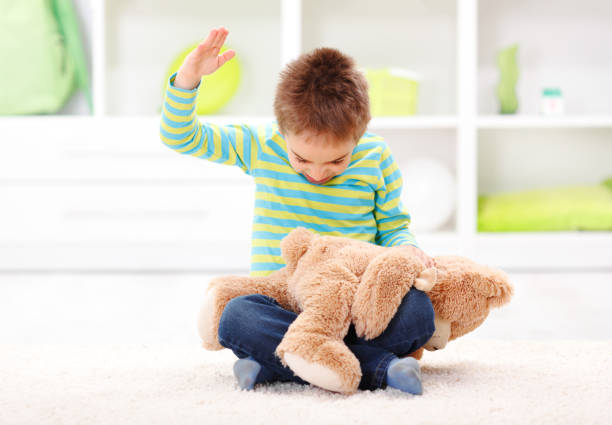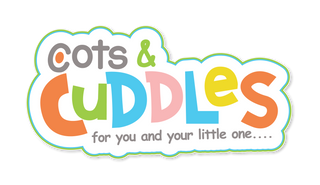Introduction:
Aggression is a complex behavior characterized by actions, both physical and verbal, that are intended to cause harm, inflict pain, or assert dominance over others. It involves hostile or violent behavior aimed at achieving a particular goal or expressing frustration, anger, or a desire to establish power or control. Aggressive behavior can manifest in various forms, including physical aggression (such as hitting, pushing, or biting), verbal aggression (such as shouting, yelling, or name-calling), and relational aggression (such as social exclusion or spreading rumors). It is important to note that aggression in toddlers is typically not driven by malicious intent but rather stems from their limited emotional and communication skills.
Parenting a toddler can be an exciting yet challenging journey. As your little one grows and explores the world, they may exhibit signs of aggression, which can be confusing and overwhelming for mothers. Aggression in toddlers refers to the display of physical, verbal, or emotional behavior that aims to express frustration, assert independence, or test boundaries. In this comprehensive guide, we will delve into the topic of managing toddler aggression, specifically focusing on babies]. Understanding and effectively addressing aggression in this age group is crucial for promoting healthy emotional development and fostering positive relationships.
Toddlers are going through important developmental stages. They are eager to communicate their needs and desires but often lack the verbal skills to do so. This communication challenge can lead to frustration and potential outbursts. Additionally, their emotional regulation skills are still developing, and they may struggle to express their feelings appropriately. During this stage, toddlers are also exploring their independence and testing boundaries. They want to assert themselves and gain a sense of autonomy. Sometimes, this drive for independence can manifest as aggressive behavior. Understanding these common causes of toddler aggression will help mothers navigate these challenges with compassion and effective strategies.
In this guide, we will discuss effective strategies for managing toddler aggression, such as positive reinforcement, redirecting attention, and teaching empathy and emotion regulation. We will also explore supportive strategies for promoting healthy emotional development in toddlers, including modeling non-aggressive behavior, creating a safe and nurturing environment, and establishing consistent routines. Throughout this guide, we will provide valuable insights, practical tips, and evidence-based approaches to empower mothers in managing toddler aggression and fostering a nurturing environment for their young children. Together, let's embark on this journey of understanding and supporting our little ones' emotional growth.
Understanding Toddler Aggression

1.1 Definition of Toddler Aggression:
Toddler aggression refers to the display of physical, verbal, or emotional behavior by children between the ages of 1 and 2 years that aims to express frustration, assert independence, or test boundaries. It is important to note that aggression in toddlers is developmentally normal to some extent, as they are still learning to regulate their emotions and communicate effectively.
Physical aggression may involve actions like hitting, biting, or pushing, while verbal aggression includes shouting, screaming, or using harsh words. Emotional aggression can manifest as temper tantrums, crying fits, or intense displays of negative emotions. These behaviors often emerge when toddlers encounter challenges in their environment or experience difficulties in expressing their needs or desires.
1.2 Normal Developmental Stages:
Understanding the normal developmental stages of toddlers can shed light on why aggression may arise during this period. Toddlers are going through rapid growth and exploration, both physically and cognitively. They are learning to walk, talk, and assert their independence.
During the toddler stage, children are developing their sense of self and testing boundaries. They are curious about the world around them and eager to assert their autonomy. However, their ability to communicate verbally is still limited, leading to frustration when they are unable to express their desires or needs clearly.
Additionally, toddlers are experiencing a wide range of emotions but have not yet fully developed the skills to regulate or manage them effectively. This lack of emotional regulation can contribute to aggressive outbursts as they struggle to cope with overwhelming feelings.
Common Causes of Toddler Aggression

2.1 Communication Challenges:
One of the primary causes of toddler aggression is communication challenges. Toddlers between the ages of 1 and 2 years are still developing their language skills and may struggle to effectively communicate their needs, wants, and emotions. This limited ability to express themselves verbally can lead to frustration and heightened emotions, which may result in aggressive behavior as a way to communicate their dissatisfaction or seek attention.
For example, a toddler who wants a toy but lacks the words to request it may resort to grabbing or hitting in an attempt to express their desire or frustration. It is important for parents to recognize that aggressive behavior in such situations is not a deliberate act of harm but rather a form of communication.
2.2 Emotional Expression:
Toddlers are also learning to navigate a wide range of emotions, but they have not yet fully developed the skills to regulate and express these emotions appropriately. When confronted with overwhelming feelings such as anger, disappointment, or fear, toddlers may resort to aggressive behavior as a way to release or cope with their emotions.
Moreover, toddlers are still learning the social norms and expectations of appropriate emotional expression. They may not yet understand the impact of their aggressive actions on others. It is crucial for parents to help toddlers develop healthy emotional expression and provide guidance in identifying and managing their emotions effectively.
2.3 Boundaries and Independence:
The developmental stage of toddlerhood is marked by a strong desire for independence and a need to explore their surroundings. As toddlers seek to assert their autonomy, they may test boundaries and challenge authority figures. This experimentation with boundaries can sometimes lead to aggressive behavior as toddlers push limits to see how others will respond.
For instance, a toddler may engage in hitting or biting to see how their caregiver reacts or to gauge the limits of what is acceptable behavior. Setting consistent boundaries and responding with firm but gentle discipline can help toddlers understand appropriate behavior and reduce their reliance on aggression as a means of testing limits.
By recognizing these common causes of toddler aggression, parents can approach their child's behavior with empathy and understanding. By addressing communication challenges, supporting emotional development, and establishing clear boundaries, parents can help toddlers navigate their aggressive tendencies and develop healthier ways of expressing themselves.
Effective Strategies for Managing Toddler Aggression

3.1 Positive Reinforcement:
Positive reinforcement is a powerful tool for managing toddler aggression. It involves acknowledging and rewarding desirable behavior to encourage its repetition. When your toddler engages in non-aggressive actions or displays appropriate behavior, provide verbal praise, a hug, or a small reward such as a sticker or a favorite activity. By focusing on positive behavior, you can reinforce and encourage your toddler to choose non-aggressive ways of expressing themselves.
Using specific and descriptive praise is particularly effective. For example, instead of simply saying, "Good job," you can say, "You did a great job using your words to ask for help." This reinforces the desired behavior and helps your child understand what they did right.
3.2 Redirecting Attention:
When you notice your toddler becoming aggressive or on the verge of aggressive behavior, one effective strategy is to redirect their attention to alternative activities. Engage them in a different task or offer them a toy or activity that captures their interest. By diverting their attention, you can help diffuse the potential for aggressive episodes and shift their focus to more positive and constructive interactions.
For instance, if your toddler is about to hit another child over a disputed toy, you can gently intervene, offer them another toy, and redirect their attention to a different play area or activity. This helps them learn alternative ways of resolving conflicts and reduces the likelihood of aggressive behavior.
3.3 Teaching Empathy and Emotion Regulation:
Empathy and emotion regulation are essential skills for managing aggression. Encourage your toddler to understand and identify their own emotions, as well as recognize the emotions of others. Use simple language to label and discuss emotions, such as saying, "I can see that you're feeling frustrated," or "Your friend looks sad."
Teaching empathy involves helping your toddler understand how their actions affect others. You can encourage them to think about how they would feel if someone treated them aggressively. This helps develop their perspective-taking abilities and fosters empathy towards others.
Additionally, provide your toddler with strategies for managing their emotions. Teach them deep breathing exercises, counting to ten, or using a calming technique such as hugging a stuffed animal. By providing them with tools to regulate their emotions, you empower them to respond to frustration or anger in non-aggressive ways.
Supportive Strategies for Emotional Development

4.1 Modeling Non-Aggressive Behavior:
As a parent or caregiver, your behavior serves as a powerful model for your toddler. Children learn by observing and imitating the actions of those around them. Therefore, it is crucial to model non-aggressive behavior in your interactions with others and your child.
Demonstrate calmness, patience, and effective communication when faced with challenging situations. Show your toddler how to express emotions in a constructive way by using words to describe your feelings instead of resorting to aggression. By consistently modeling non-aggressive behavior, you provide your child with a positive example to follow and help shape their own behavior.
4.2 Creating a Safe and Nurturing Environment:
A safe and nurturing environment is fundamental for your toddler's emotional development. Provide a physical space that is free from hazards, allowing your child to explore and play without unnecessary risks. Safety gates, outlet covers, and secured furniture can help create a secure environment for your toddler to move and explore safely.
Moreover, a nurturing environment includes offering unconditional love, support, and understanding to your child. Create a warm and emotionally responsive atmosphere where your toddler feels comfortable expressing their needs and emotions. By providing consistent love and support, you help build your child's emotional resilience and reduce the likelihood of aggressive behavior.
4.3 Consistent Routines and Predictability:
Toddlers thrive in environments with consistent routines and predictability. Establishing regular daily routines, such as mealtimes, nap times, and bedtime, can help your toddler feel secure and in control of their daily experiences. Knowing what to expect provides a sense of stability and reduces anxiety, which can contribute to aggressive behavior.
Consistency extends beyond routines to discipline and boundaries as well. Set clear expectations and enforce consistent consequences for aggressive behavior. Consistency helps toddlers understand the consequences of their actions and provides a structure for their behavior.
Conclusion:
Understanding and managing toddler aggression is a crucial aspect of parenting during the toddler years. By recognizing the causes behind their behavior and implementing effective strategies, mothers can navigate the challenges of aggression in toddlers. This comprehensive guide has explored various aspects of managing toddler aggression and provided insights, strategies, and tips for supporting emotional development in this age group. Toddler aggression often stems from communication challenges, emotional expression, and the drive for boundaries and independence. By acknowledging these factors, parents can approach their child's behavior with empathy and understanding, recognizing that aggression is often a temporary phase in their development.
Effective strategies for managing toddler aggression include positive reinforcement, redirecting attention, and teaching empathy and emotion regulation. By reinforcing positive behavior, diverting attention from potential aggression triggers, and guiding toddlers towards understanding and managing their emotions, parents can help shape their child's behavior in a positive direction. Additionally, creating a safe and nurturing environment and establishing consistent routines play significant roles in managing aggression. By modeling non-aggressive behavior, providing a secure and loving atmosphere, and implementing predictable routines, parents can support their toddler's emotional well-being and reduce the likelihood of aggressive behavior.
It is important to remember that managing toddler aggression is a journey that requires patience, empathy, and consistency. Every child is unique, and what works for one may not work for another. It is crucial to adapt strategies to meet the individual needs of your toddler and seek support from professionals or parenting resources when needed. By implementing the strategies outlined in this guide and providing a nurturing and supportive environment, parents can guide their toddlers through this developmental stage, helping them navigate their emotions, develop healthy coping mechanisms, and build positive relationships.
As you embark on this journey of managing toddler aggression, remember that your love, understanding, and consistent guidance can make a significant impact on your child's emotional growth and overall well-being. Embrace the challenges with patience and celebrate the milestones along the way, knowing that you are equipping your child with the tools they need to navigate their emotions and develop into confident, compassionate individuals.

